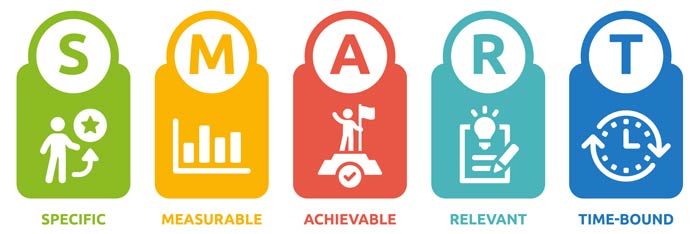
Get SMART about Safety Goals
The deadline is approaching for your agency to complete and submit SMART goals for 2024-2025. “The risk profile varies from member to member, so risk management goals must be individual as well,” says Tim Lenac, PDRMA Risk Management Services Supervisor. Creating goals that are SMART — Specific, Measurable, Achievable, Relevant and Time-bound — is the key to addressing your agency’s specific risk management needs.”
Members must complete their applicable SMART Goal Action Steps by their assigned deadlines, and they then have 90 days to develop their next SMART goals. In addition, agencies need to complete their assigned target forms (Injury Prevention and/or Fleet) and all agreed-upon activities by Dec. 1 to be eligible for the third Risk Management Review incentive.
If it sounds complicated and/or time consuming, check out one PDRMA member’s tips for determining which SMART goals to pursue and crafting an action plan to achieve them.
According to Lynne Yuill, Adult Activity Center Supervisor, St. Charles Park District, “Our goals have been attainable and are ones that benefit the greatest number of people — employees, community residents, participants and patrons. We still make our SMART goal challenging, though, to force us outside our comfort zone; it motivates us to succeed.”

Safety Team members from St. Charles Park District
wearing hi-visibility vests to demonstrate the importance
of using them when working in parking lots and near roadways.
Finding the right SMART goals is a multistep process, Yuill notes. “We looked at trends, listened to our employees and reviewed PDRMA forms to develop our 2023/2024 SMART goals,” she explains, adding that ideas often come after a safety team meeting.
“Our safety team discussed possible goals, and what we needed to focus on became apparent. Information from our PDRMA forms, facility inspections and job-site analyses helped us define our SMART goal.” Yuill noted that they also listened to supervisors’ input about employees asking for more training on a specific topic (de-escalation/conflict resolution techniques) to determine their 2023 goal. “From there, our risk manager and I met to decide the best way to move forward. Within two-to-three weeks, we had our SMART goal!”
Staying on Track
“As my agency’s Safety Coordinator, I kept the process moving and reported back to the safety team,” Yuill explains. “I asked my teammates on a specific SMART-goal subcommittee for documentation and progress updates.”
SMART Tips
Yuill offers a few suggestions that helped her team create SMART goals to get the job done.
- Don’t overthink it! We do things every day that have a result (checking items off our to-do list). Find something your agency needs to check off its list, identify how to do it and by when, plan the steps and then commit to it. THAT’S your SMART goal!
- Look at your safety team initiatives and formulate a goal. Write them down to make them more tangible.
- Use PDRMA’s Slip, Trip and Fall assessment to identify potential risks, then write a goal based on that data.
Whatever goals you choose, Yuill says, the discipline of formulating SMART goals is a valuable tool. “We’ve used our SMART goal to hold ourselves accountable for reducing risks and training employees on best practices.” |